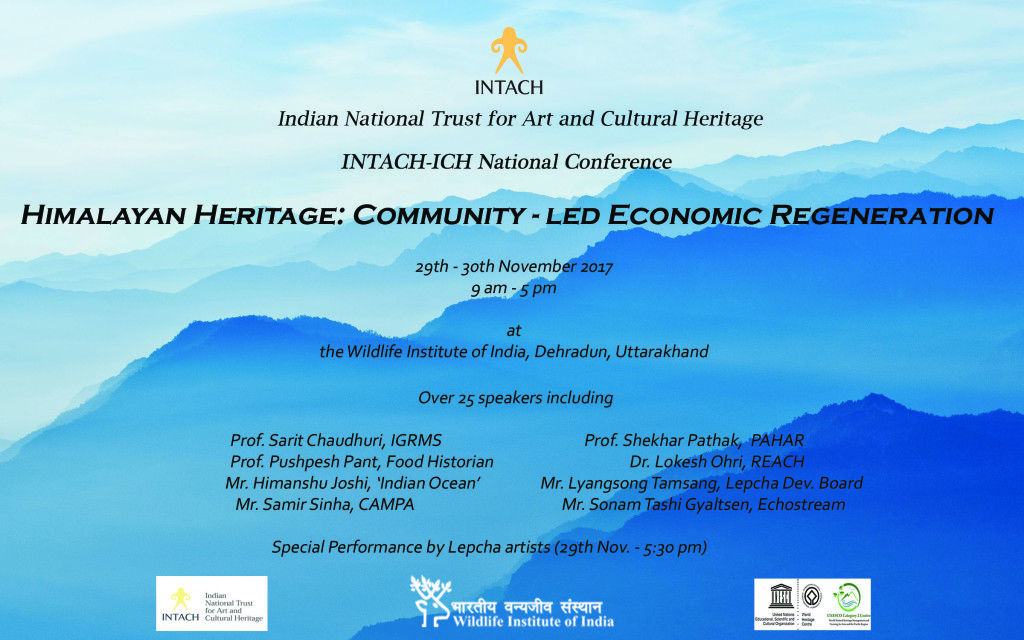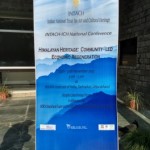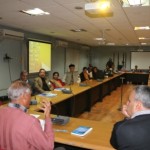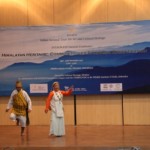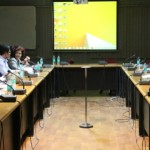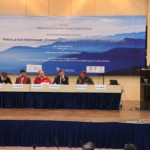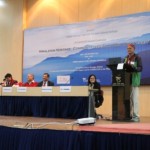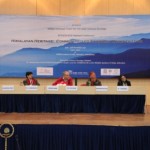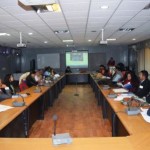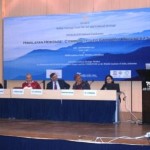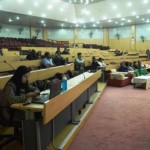National Conference on ‘Himalayan Heritage: Community-led Economic Regeneration’ organized by the ICH division in collaboration with the INTACH Uttarakhand Chapter and the UNESCO C2C at the Wildlife Institute of India, Dehradun to be held on 29th and 30th November, 2017 in Dehradun, Uttarakhand Back
INTACH-ICH National Conference
Himalayan Heritage: Community-led Economic Regeneration
Date: 29-30 November 2017
Venue: Wildlife Institute of India, Dehradun, Uttarakhand
The Himalayan region in India, broadly comprising the states of Jammu and Kashmir, Himachal Pradesh, Uttarakhand, Sikkim, the hill region of West Bengal, and Arunachal Pradesh, is a unique landscape dotted with communities possessing a wealth of intangible heritage. This is reflected in numerous languages, indigenous knowledge systems including medicinal knowledge, food ways, arts, crafts and performative traditions. Several major religions and sacred shrines have influenced the movements of populations and impacted cultural flows in the area. For hundreds of years, the beliefs and practices of ethnographically complex groups have informed the region’s way of life, and contributed to the evolution of distinct cultural identities. Under gravest threat are the oral traditions of several communities, which incorporate invaluable local knowledge and creative output. This loss is also underpinned by the loss of languages, thus impacting the composite culture of this region.
The Intangible Cultural Heritage Division, INTACH, in collaboration with the INTACH Uttarakhand Chapter and the UNESCO C2C at the Wildlife Institute of India, Dehradun, organized a National Conference on the intangible culture of the Himalayan region in the month of November 2017, with the aim to deliberate with community members, professionals, scholars, researchers and other cultural specialists on the idea of social and cultural identity, traditional knowledge, related oral traditions and to explore how this meets the challenges of income generation and livelihood concerns.
Key objectives of the conference were:
- To gain a better understanding of the notion of ‘belonging’, and to see how this notion is interpreted by the Himalayan people, in the framework of a distinctive set of cultural and spiritual beliefs. To map out the contemporary cultural dynamics, in a comparative study across the Himalayan region.
- To identify the loss of language, indigenous knowledge, performing arts and oral traditions, and explore means to safeguard these, with impact assessment, documentation and revitalization plans. To look at means to involve the local community in strengthening their ‘rootedness’ and understanding of their unique and rich heritage.
- To explore issues like tribal rights over land, forests produce and their management; and look into means to promote development and livelihoods with sustainability. To explore connected issues related to natural heritage management.
- To explore avenues of employment generation through traditional creative occupations related to art, craft, performance and indigenous knowledge, and existing skills, and use of these as a resource for a community’s economic development.
- To educate and sensitize the youth about their cultural legacy, the new possibilities of employment related to cultural activities, heritage tourism; and capacity building through transmission workshops with knowledge-holders.
Ms. Nerupama Y. Modwel, Director, ICH division welcomed the delegates who represented all the Himalayan regions of India, Jammu & Kashmir, Himachal Pradesh, Uttarakhand, Sikkim, Hills of West Bengal and Arunachal Pradesh. The papers & presentations delivered during the conference were under the following themes:
- ICH as a source of community Development: creative economies
- Cultural Representation & communication through emerging media
- Communities and Natural Heritage Management
- Oral Traditions: Their Relevance
- Women & Empowerment: Custodians of ICH
- Heritage Management: Perspectives
On the above mentioned themes the presenters deliberated over issues like: promotion and development of communities, livelihood generation with sustainability, distinctive sets of indigenous and sacred belief systems within the Himalayan region, exploring and identifying the loss of language, traditional knowledge, performing arts and oral traditions and addressing safeguarding concerns.
The following are the highlights from the presentations of the delegates:
- VB Mathur, Director, WII, touched upon the dichotomy between nature, culture and how we have our own sense of authenticity for cultural practices and cultural material. He expressed concern over the effects of globalization on intangible heritage.
- Sarit Chaudhuri, Director, IGRMS talked about things that have gained value across the intangible and tangible binaries like food, the arts etc. which are everyday ways of life for communities. He also talked about the cultural and religious heritage of Arunachal Pradesh along with the significance of border land studies in the Himalayas.
- Shekhar Pathak of PAHAR dwelled not only on the landscape but also the cultural diversity of the Himalayas talking about ethnic groups and traditional knowledge systems mentioning raw material, geographical diversity, vernacular architecture, traditions and how this is not an alternate but original knowledge.
- Pushpesh Pant talked about mentors and the younger generation and how tradition is a living thing, and recreating it from say a museum would be dangerous.
- Lokesh Ohri spoke on the zero investment development intervention in Uttarakhand. His talk focused on migration, the misplaced priorities of Uttarakhand. He elaborated his experiences with communities across Uttarakhand and how slow tourism can benefit the state.
- Sonam Tashi Gyaltsen spoke about the Singhik monastery project, the restoration undertaken by him with the total involvement of local communities and dwelt on the creative mountain economy suggesting future steps for the region.
- Sudhir Singh presented his study on Dogra heritage, language, and challenges to Dogri language, it’s potential. He elaborated on Dogri rituals and their importance.
- Joshua Hishey & Ms. Richa Ghansiyal spoke about the values of sustainability, community living, showcasing some of the work they’ve done in the field of design using local material, for example bamboo, old timber, nettle.
- Charisma Lepcha spoke about the film as visual anthropology focusing on Doma Lepcha films. She also talked about participatory cinema with the community involved in various stages of the filmmaking process, and the local filmmakers.
- Tashi Gyamba talked about the 5 day Shirgin festival celebrated to appease the local deities in Kinnaur. He screened a beautifully made (by him) short film covering the festival.
- Sargam Mehra’s talk focused on the platforms of emerging media and the use of digital media among communities of Uttarakhand. Case studies from across the state were cited.
- Samir Sinha expressed concern over the absence of local youth in tourism initiatives, and talked about concepts of eco tourism and the significance of carving out employment avenues from available resources.
- Malvika Onial’s presentation discussed World heritage sites, The Concept of mixed heritage, The Criteria for assessing Outstanding Universal Value, Conservation, Capacity building, Communication And Community inclusion
- Stanzin Namgyal’s presentation on the Changpa landscape focused on religious beliefs, Buddhist percepts on ecology and conservation.
- Mr Malhans could not unfortunately not join due to ill health. He sent an interesting presentation on a local community’s fight against setting up of hydro electric dam in a sacred precinct, that is Jogini Falls.
- Debjani Roy spoke on personal certification for traditional knowledge practitioners, and elaborated on the processes of accreditation, assessment and discussed ISO standards for folk healers.
- SM Sahni spoke on the shrine of Vaishnodevi. He elaborated on the rich heritage of the area and about the increased tourist flow to the shrine, which is only possible through well-managed infrastructure.
- Sandra Albert informed us about the Nongai Dawai Khasi Tribal healers of Meghalaya. She spoke about the processes of becoming healers where the sap or potential or inborn talent or gift also plays a role.
- Kavita Suri spoke about the rich cultural heritage of the Gujjars and Bakharwals in the Jammu region talking about traditional costumes, food, etc that are now in decline.
- DR Purohit spoke about the myths, stories and folklore of Badrinath, with a beautiful rendering of the songs by Dr Sanjay Pandey. It was a real celebration of the rich heritage of the state of Uttarakhand.
- Simon John talked about the Murung celebration in Arunachal Pradesh by the Apatani tribe, the importance of the festival and its intricate processes and nuances.
- VR Pant related his experiences in the Kumaon region in witnessing trance channeling and healing using the concept of spirit healing as seen in the Jagar system.
- AB Subba spoke on the demographic features of Sikkim and about the myths and practices of Limboo society with specific focus on samjik mundhun.
- Ms Maalvika Pathania discussed the role of women as traditional custodians of intangible heritage with examples from various parts of Himachal. Her presentation stressed the inherent nature of this heritage in people’s lives.
- Mr Prassanna Ramaswammy G. & Ms Abhilasha Bahuguna spoke about the initiative ‘Looms of Ladakh’ started as a very successful cooperative venture that demonstrates a way of enabling women’s empowerment and checking migration.
- Mr Lyangsong Tamsang’s talk centered on the Lepcha people and their close connect with nature as nature worshippers and their efforts to keep their rich heritage alive and thriving.
- Ms Apoorva Goyal put forward the concepts of materialist, composite and spiritualist heritage and questioned the application of western approaches to heritage interpretation.
- Mr Saleem Beg presented a case study of Kashmir dealing with natural disasters and destruction of cultural properties. Specifically the floods and their devastation as a result of various reasons including change in land use, degradation of green cover
- Himanshu Joshi of ‘Indian Ocean’ gave a Lecture cum Demonstration was on the Kumaoni Ramlila. He held the audience spell bound by performed and explained a few select verses and compositions from the 9 day long Kumaoni Ramlila.
A special performance by the visiting Lepcha artists was organised in the evening by Mr Lyangsong Tamsang, President, West Bengal Mayel Lyang Lepcha Development Board on the first day of the conference. A special Nature trail was organised for the participants the next morning. For the first time the conference was also live-streamed which enhanced the reach of the conference to a wider audience. The conference was well appreciated and concluded with a vote of thanks and the presentation of certificates to the delegates. A discourse through this seminar reiterated the need for cultural mapping and research delving into the heritage of this region, and looking at cultural continuities and transformations observed over time.



